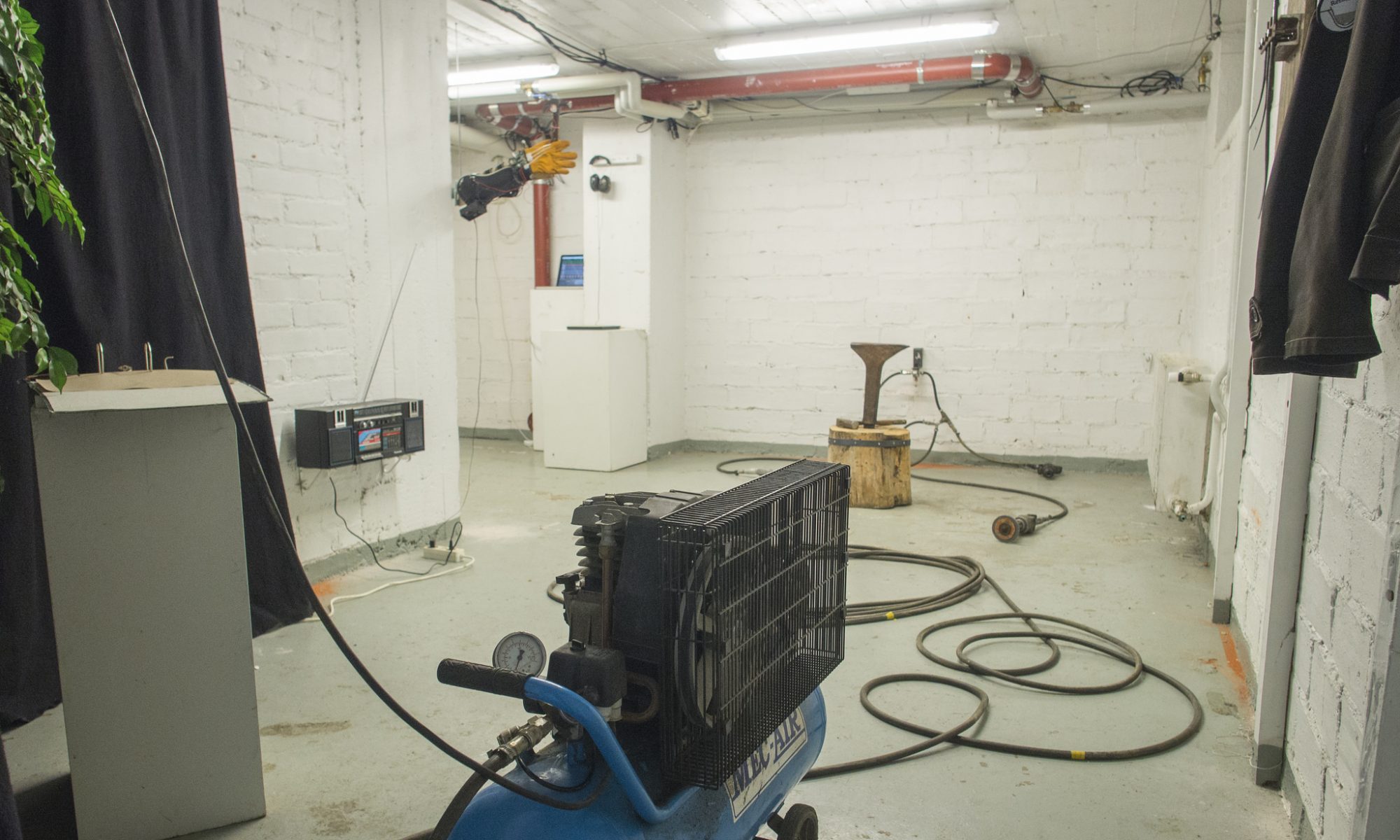Is love an emotion or our interpretation of our behaviour?
Visited “WASD” exhibition by Reija Meriläinen, Santeri Räisänen & Eetu Sihvonen at Oksasenkatu 11. They presented a chair-shaped controller which guest could use to play a dialogue driven adventure game. The chair-controller referenced fleshy interfaces recognized in Cronenberg movies. To start the adventure players had to navigate through a 3d model of the the exhibition space. The simple trick of presenting a playable virtual copy of the gallery was enough to immerse me into the the gameplay. The rest of the game took place inside a sphere shaped world. Players were invited to engage in “Dr. Sbaitso like” therapeutic discussions with NPCs. If the dialogue was fruitful they begun to follow the player but characters also tried to trick the player into resetting the game. I didn’t learn what the objective of the game was but I enjoyed it’s melancholic mood. One segment the world presented a free roaming horse’s ass, which was previously seen as a part of Meriläises work for the Such gallery (Reija’s piece for Such referenced a riding trip we made 2015).
Visited Antti Majavas exhibition opening at the Helsinki Art Museum. He had build a hull of an airplane and presented various landscapes through the plane windows. Some landscapes where actually sketches of clothing Malevich had designed for the “Victory over the Sun” opera, others where aerial images from Google Earth, views through a car window and diary like footage showing advertisement imagery. Some parts (if not all) of the installation were running from electricity provided by Mustarinda residencies powerplan. The exhibition was accompanied with texts in which Majava shared his frustration with avantgarde art. Gathering from the texts he was making an anti-(avantgarde)art statement. He had identified a cultural icon through which our perception of the globe is build: The Aeroplane Window.
Also saw “Harmaja +10 länsiluode 35m/s” by Paula Lehtonen at the Hippolyte gallery. Lehtonen had designed a wall mounted dome which was used as a projection surface. A video showed partly computer generated dystopian scenery from Helsinki. She had divided the room the work was in with a fake wall, so that she could project the video on the dome from behind. A very nifty device. The work had an audio track made by Rasmus Hedlund but the exhibition opening made hearing it impossible. I’ll have to revisit the exhibition.
I’m very frustrated with Margo Demello’s “Animals and Society: An Introduction to Human-Animal Studies”. The book provides a decent overview of the areas of interest for human animal studies but it doesn’t approach the field critically. It reads more as a long and detailed pamphlet advocating animal rights. I’ll have to reread Jason Hribal’s “Animals are Part of the Working Class Reviewed” to purge my thoughts. We are preparing the “Horse and Performance” course for the Theatre Academy of the University of the Arts Helsinki which starts in a week.
Currently excited about the Novation Circuit 1.3 firmware update. Got some funky samples loaded.

